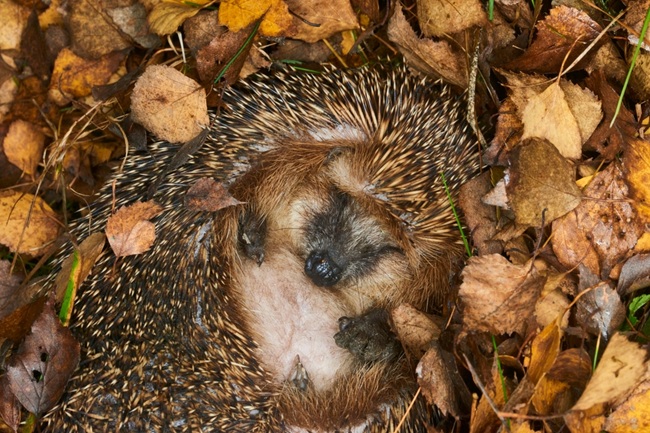Scientists pinpoint single gene responsible for initiating winter behaviour of mammals
Published: 17 November 2025
As the days continue to get shorter scientists have made a significant step in understanding exactly what makes mammals exhibit seasonal behaviours like hibernation and migration
As the days continue to get shorter scientists have made a significant step in understanding exactly what makes mammals exhibit seasonal behaviours like hibernation and migration.
The study – published in the journal eLife and led by the University of Glasgow – pinpoints a single gene, the Dio3 gene, present across all mammals, as the biological mechanism behind seasonal behaviours.

Mammals program their seasonal behaviour (like hibernation and migration) to happen at very specific times of the year; and, like clock-work, many mammals will go dormant and hibernate over the winter.
While we know that animals respond to environmental cues to time phenological events, this is the first time a study has shown the intrinsic mechanism of these seasonal behaviours in mammals which, until now, has remained elusive.
Previously, scientists have seen correlations, or environmentally-driven changes, in gene expression; but this study demonstrates that the Dio3 gene is critical for setting the internal seasonal clock of mammals and must be active to initiate winter dormancy.
The Dio3 gene is evolutionarily conserved across all mammals including humans, birds, reptiles and fish, and the function for timing seasonal changes in behaviour is consistent across animals. The gene is predominantly active in animals closer to the poles (ie a more temperate climate) and less active at the equator.
The scientists made the discovery by using transcriptomic sequencing and frequent sampling and monitoring of the Djungarian hamster to investigate the animals’ seasonal clock.
They found that when the days get shorter, like we are currently experiencing, the lengthening of the nighttime appeared to activate the Dio3 gene. This gene then set a clock that covered six months during which time the hamster model’s initiated winter states (e.g. hibernation). When the function of the gene ended, the hamsters spontaneously returned to summer conditions. The timing of the spontaneous return mimicked when mammals emerge in the spring.
Tyler Stevenson, Professor of Physiology at the University’s School of Biodiversity, One Health and Veterinary Medicine, said: “Our work is important because we now know the genes involved, and the sequence of changes in gene expression that control long-term changes in seasonal physiology and behaviour. By understanding how and when genes are active during the season provides us with better knowledge of the underlying mechanism for annual health, and importantly, the potential causes of acute or chronic illnesses.”
The study, ‘Hypothalamic deiodinase type-3 establishes the period of circannual interval timing in mammals,’ is published in eLife. The study is funded by The Leverhulme Trust.
Enquiries: ali.howard@glasgow.ac.uk or elizabeth.mcmeekin@glasgow.ac.uk
First published: 17 November 2025
<< MVLS News

